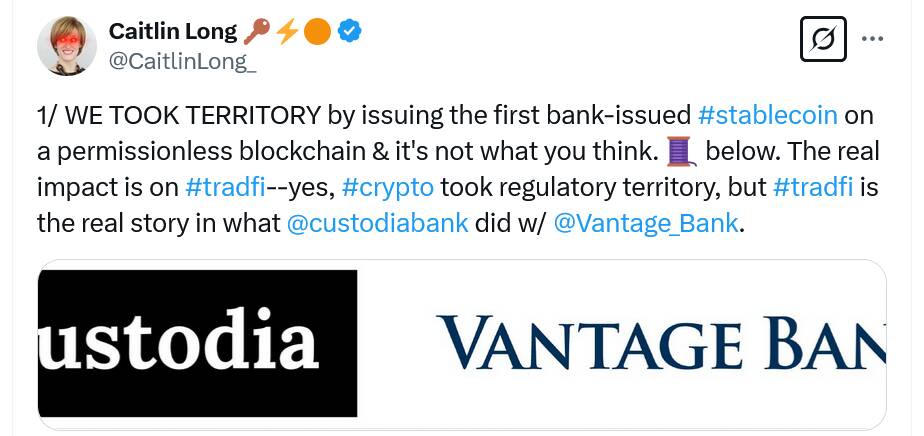Fidelity Investments, one of the largest asset management firms in the world, is reportedly nearing the launch of a stablecoin pegged to the US dollar, highlighting its continued commitment to the evolving digital asset landscape. According to a recent report by the Financial Times, this initiative comes as financial institutions in the U.S. are beginning to embrace cryptocurrency offerings amidst a more favorable regulatory climate under the Trump administration. With a staggering .8 trillion in assets, Fidelity’s move to introduce a stablecoin is seen as part of a broader strategy to expand its services in the crypto space through its Fidelity Digital Assets division.
The stablecoin is intended to facilitate transactions and could complement Fidelity’s other crypto innovations, such as the new Ethereum-based “OnChain” share class for its US dollar money market fund, which is designed to improve transaction tracking for its Treasury Digital Fund. This product aims to bring traditional finance closer to the rapidly expanding world of cryptocurrencies, with Fidelity’s filing pending approval from US regulators ahead of a potential launch on May 30.
“If approved, it would signal a maturing posture from the SEC that recognizes functional differentiation across blockchains,” said Lingling Jiang, a partner at DWF Labs, referring to a recent request by the Cboe BZX Exchange to list a proposed exchange-traded fund (ETF) for Solana, illustrating the significance of regulatory movements.
In a broader context, the election of Donald Trump has energized the cryptocurrency sector, with many stakeholders optimistically awaiting new legislation that could formalize and regulate stablecoins. Currently, the proposed GENIUS Act aims to outline clear collateralization standards and compliance requirements for stablecoin issuers, signaling potential regulatory clarity that market participants have eagerly anticipated. This legislative movement may pave the way for greater innovation and adoption within the crypto industry, presenting significant opportunities as financial technology continues to advance.
Fidelity Investments Enters Digital Asset Space with US Dollar-Pegged Stablecoin
Fidelity Investments is making significant strides in the digital asset market, which could have various implications for investors and consumers alike.
- Stablecoin Launch:
- Fidelity is testing a US dollar-pegged stablecoin, indicating their commitment to the cryptocurrency space.
- This could provide a more stable means of transaction compared to volatile cryptocurrencies.
- Ethereum-Based Offerings:
- They are launching an Ethereum-based “OnChain” share class for their US dollar money market fund.
- This may enhance the transaction and investment experience for consumers looking to merge traditional and digital assets.
- Regulatory Changes:
- The favorable regulatory climate under the Trump administration is encouraging financial institutions to explore cryptocurrency offerings.
- A potential shift in regulations can lead to a more integrated financial ecosystem involving digital currencies.
- Emerging Financial Products:
- Fidelity’s proposed exchange-traded fund (ETF) for Solana (SOL) could change the investment landscape by providing access to next-gen assets.
- These products may offer more investment options, impacting portfolio diversification for individual investors.
- Stablecoin Legislation on the Horizon:
- Upcoming US legislation, such as the GENIUS Act, may establish crucial guidelines for stablecoin operations.
- This could foster greater consumer trust and security in using stablecoins for transactions.
“If approved, it would signal a maturing posture from the SEC that recognizes functional differentiation across blockchains.” – Lingling Jiang, DWF Labs crypto venture capital firm
Fidelity’s Bold Move into Stablecoins: A Game-Changer in the Crypto Landscape
Fidelity Investments is making waves in the cryptocurrency sphere with its ambitious plans to launch a US dollar-pegged stablecoin as part of a broader initiative to expand into digital assets. This venture, backed by the favorable regulatory climate that has emerged under the Trump administration, presents both significant competitive advantages and potential challenges when compared to similar efforts by other financial institutions.
Competitive Advantages: Fidelity’s established reputation as a leading asset manager, with a staggering .8 trillion under management, gives it a powerful edge over newer entrants in the crypto space. The firm is transitioning through its cryptocurrency division, Fidelity Digital Assets, positioning itself as a serious player in digital finance. The upcoming Ethereum-based “OnChain” share class for its US dollar money market fund is also noteworthy, as it aims to enhance transaction tracking for the Fidelity Treasury Digital Fund, thereby increasing transparency and trust for investors. In contrast, firms like Custodia and Vantage Bank are navigating the complexities of launching their stablecoins while gaining industry recognition as well.
Potential Disadvantages: Despite its strengths, Fidelity faces the challenge of regulatory scrutiny that looms over the crypto sector. While the current administration appears favorable to crypto innovation, any sudden policy shifts could impede Fidelity’s plans, unlike smaller players who might be more agile and able to adjust to changing regulations. Furthermore, Fidelity’s expansive focus on stablecoins may draw attention away from its traditional asset management services, potentially alienating some of its long-standing clients who may not be as enthusiastic about cryptocurrency.
This strategic move could significantly benefit institutional investors and traditional finance professionals looking to explore blockchain technologies in a regulated environment. As Fidelity forges ahead with its stablecoin project, it can create substantial improvements in liquidity and investment options for its customer base.
However, the introduction of Fidelity’s stablecoin might create challenges for smaller crypto projects and competitors who may struggle to maintain their market share in the face of such a formidable contender. As established players in the industry ramp up their offerings, the landscape could become increasingly competitive, compelling emerging firms to innovate or risk being left behind.
In summary, Fidelity’s foray into stablecoins undoubtedly positions the firm as a major influencer in the evolving financial landscape, but its journey will not be without hurdles. As the market expands and stabilizes, all eyes will be on how Fidelity balances its traditional investments with its innovative approaches amidst a shifting regulatory backdrop.

















